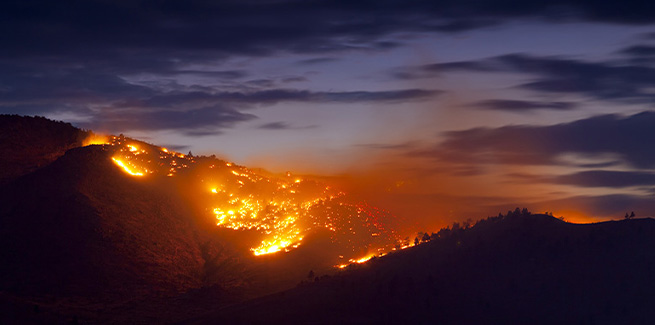New findings published by the Australian Housing and Urban Research Institute (AHURI) have found that the vast majority of Australians take into consideration the proximity of extreme weather events when deciding on whether to, or not to, live in a city.
The data – which was included in AHURI’s Understanding what attracts new residents to smaller cities report and is derived from a survey of 3,000 Australians conducted over February – cited a series of reasons and justifications as to why a specific demographic may relocate to a different city.
According to the report, the potential threat from different natural disasters is a key decider for the majority of Australians in deciding where they may migrate to in the country, with extreme heat and bushfires being considered important in some capacity for 96 per cent of respondents – 39 per cent of whom said it was very important.
Similarly, floods and flash flooding alongside droughts and water shortages were both considered by 95 per cent as important in some capacity (33 per cent and 27 per cent as very important respectively).
Pandemics (90 per cent as important in some capacity), earthquakes (88 per cent), damaging winds (93 per cent), hail (92 per cent) and agricultural pests and diseases (72 per cent) were also found to be significant influencing factors.
This intersection of climate change with the property market was also raised in Aussie’s Progress Report, which suggested that extreme weather events could influence prices.
“Rising average temperatures may deter buyers from areas with low tree canopy shade, and the increased incidence of extreme weather events have already contributed to higher insurance premiums in pockets of the market, which may make housing costs prohibitive for some prospective buyers,” the researchers highlighted.
“Meanwhile, there is evidence of some markets seeing an increase in demand for their cooler climates, which has been cited as a motivation for internal migration in Australia.
“Cooler-climate areas like the Blue Mountains of Sydney, and parts of Tasmania and Victoria may be at an advantage long term, should average temperatures continue to rise.”
Earlier this year, Real Estate Institute of Australia president Hayden Groves said that the body is expecting demand for sustainable homes and living to increase over the calendar year.
“Demand for sustainable homes or homes with sustainable features will increase, as will client expectations that we as real estate agencies are running sustainable businesses,” Mr Groves said.
“This could be anything from preferences for complexes with electric car charge points right through to homes built with green materials or powered by renewable energy.”
[Related: Sustainable properties high on buyers’ minds]
 ;
;